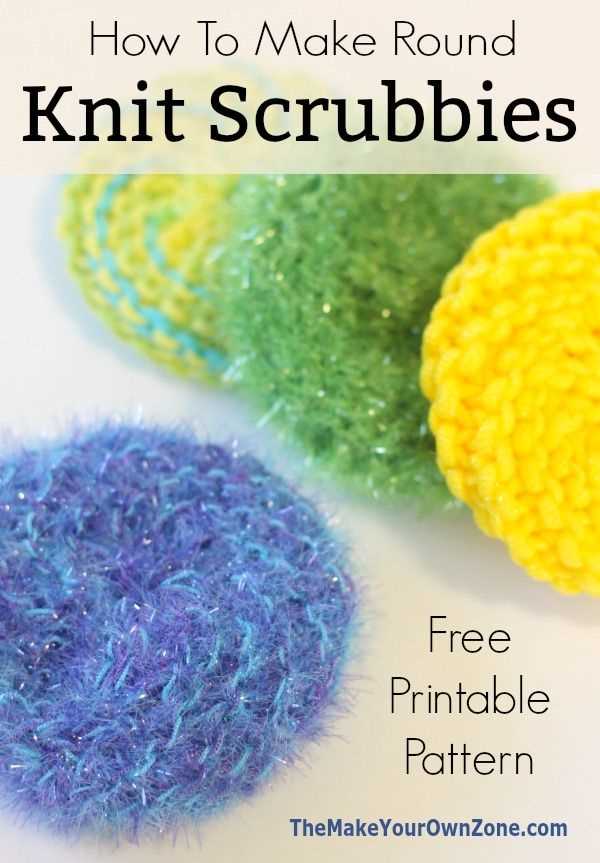
Are you tired of traditional dishcloths that just don’t scrub away tough messes? Look no further! This free scrubby dishcloth knit pattern is the perfect solution for all your cleaning needs. Whether you need to tackle baked-on food or stubborn stains, this pattern will help you get the job done.
What sets this dishcloth apart from others is the unique scrubby material used in the design. Made from a combination of cotton and scrubby yarn, this dishcloth provides both softness and scrubbing power. The textured pattern creates a gentle exfoliating effect, making it perfect for cleaning delicate dishes or even your own skin.
Not only is this pattern efficient and effective, but it’s also a quick and easy project to complete. Even beginner knitters can quickly whip up a batch of these dishcloths in no time. The pattern includes detailed instructions and helpful tips, ensuring your success. Plus, with the added bonus of being able to customize the colors and sizes, you can create a set that matches your kitchen decor perfectly.
So say goodbye to those flimsy dishcloths that just can’t get the job done. Try out this scrubby dishcloth knit pattern for yourself and experience the difference. Your dishes will thank you!
How to Knit a Scrubby Dishcloth: A Free Pattern
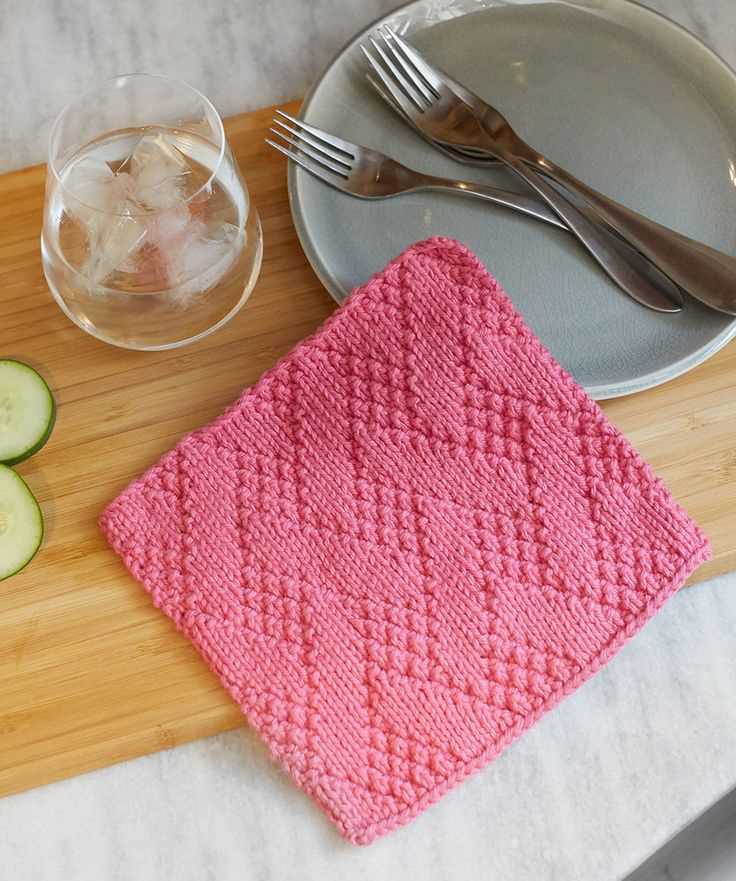
If you enjoy knitting and are in need of a practical and durable dishcloth, then this free pattern is perfect for you. The scrubby dishcloth is a great project for beginner knitters and can be completed in a short amount of time. The pattern uses a combination of regular yarn and scrubby yarn to create a textured cloth that is great for scrubbing dishes or cleaning countertops.
To begin, gather the necessary materials: size 8 knitting needles, regular cotton yarn, and scrubby yarn. Cast on 40 stitches using the regular cotton yarn. Knit the first row, then begin the pattern as follows:
- Row 1: with regular cotton yarn, knit 2, purl 2, repeat to the end of the row
- Row 2: with scrubby yarn, knit all stitches
- Row 3: with regular cotton yarn, purl 2, knit 2, repeat to the end of the row
- Row 4: with scrubby yarn, knit all stitches
- Repeat these 4 rows until the dishcloth measures your desired length, ending with a row of regular cotton yarn.
Once you have completed the desired number of rows, bind off all stitches and weave in any loose ends. The dishcloth is now ready for use!
This scrubby dishcloth is not only functional but also makes for a great gift. Customize it by choosing different colors of regular cotton yarn and scrubby yarn to match the recipient’s kitchen decor. The textured pattern created by the alternating rows of regular yarn and scrubby yarn provides extra scrubbing power, making this dishcloth perfect for tackling stubborn messes.
With this free pattern, you can easily knit your own scrubby dishcloths for yourself or to give as thoughtful handmade gifts. Not only will you enjoy the process of knitting something useful, but you will also have a durable dishcloth that will last for a long time.
What is a Scrubby Dishcloth?
A scrubby dishcloth is a type of washcloth that is specifically designed to help you scrub and clean dishes in the kitchen. It is made using a special kind of yarn that has a rough texture, which makes it highly effective at removing grime and food particles from pots, pans, and plates.
Unlike regular dishcloths or sponges, a scrubby dishcloth provides extra scrubbing power due to its textured surface. This makes it easier to tackle tough, stuck-on food and stains without having to use excessive force or harsh chemicals.
Scrubby dishcloths come in various sizes, but they are typically smaller than regular washcloths to provide better control and precision when cleaning. They are also often knit or crocheted using a specific pattern that enhances the scrubbing ability of the cloth.
These dishcloths are not only functional but also reusable and eco-friendly. By using a scrubby dishcloth, you can reduce the need for disposable sponges or paper towels, minimizing waste and saving money in the long run.
In conclusion, a scrubby dishcloth is a versatile and effective tool for cleaning dishes in the kitchen. Its rough texture and specialized design make it ideal for tackling tough stains and grime, while also being reusable and environmentally friendly. Adding a few scrubby dishcloths to your kitchen essentials can help make your cleaning routine easier and more efficient.
Benefits of Using a Scrubby Dishcloth
When it comes to doing dishes, having the right tools can make all the difference. One such tool that is often underrated is the scrubby dishcloth. This versatile and easy-to-use cloth offers a number of benefits that can make your dishwashing experience more efficient and effective.
1. Effective Cleaning Power
A scrubby dishcloth is designed with a slightly rough texture that helps to remove stubborn, stuck-on food and grime from dishes. The textured surface of the cloth provides added scrubbing power, making it easier to tackle even the toughest messes. Whether you’re scrubbing pots and pans or delicate glassware, a scrubby dishcloth can help you achieve a sparkling clean finish.
2. Gentle on Cookware
While a scrubby dishcloth is tough on food residue, it is also gentle on your cookware. The textured surface of the cloth allows you to scrub away stuck-on food without scratching or damaging the surface of your pots and pans. This makes it a great tool for cleaning non-stick cookware and delicate items that require a gentle touch.
3. Versatile and Multi-Purpose
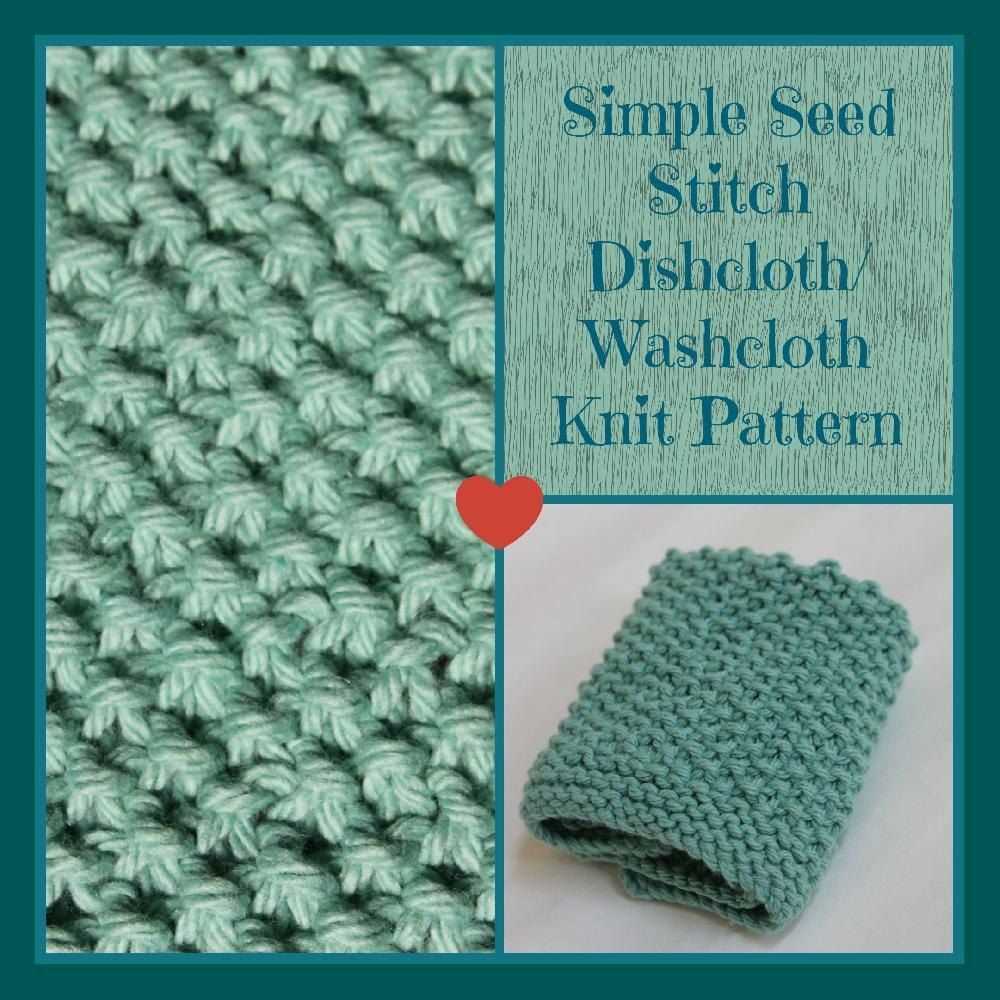
A scrubby dishcloth is not just limited to cleaning dishes. Its versatility makes it suitable for a variety of cleaning tasks in the kitchen and beyond. Use it to scrub countertops, wipe down appliances, or even remove soap scum from your bathroom tiles. Its compact size and easy-to-maneuver design make it a versatile tool for all your cleaning needs.
4. Eco-Friendly Option
Using a scrubby dishcloth is a more eco-friendly option compared to disposable sponges or cleaning wipes. By opting for a reusable cloth, you can reduce waste and contribute to a more sustainable lifestyle. Simply toss your scrubby dishcloth into the washing machine when it becomes dirty, and you’re ready to use it again.
In conclusion, a scrubby dishcloth offers a range of benefits that can enhance your dishwashing experience. Its effective cleaning power, gentle nature, versatility, and eco-friendly design make it a valuable tool in any kitchen. Consider adding a scrubby dishcloth to your cleaning arsenal and enjoy the benefits it brings to your daily dishwashing routine.
Materials Needed for Knitting a Scrubby Dishcloth
Knitting a scrubby dishcloth requires a few specific materials to ensure the best results. Here is a list of the essential items you will need:
1. Scrubby Yarn
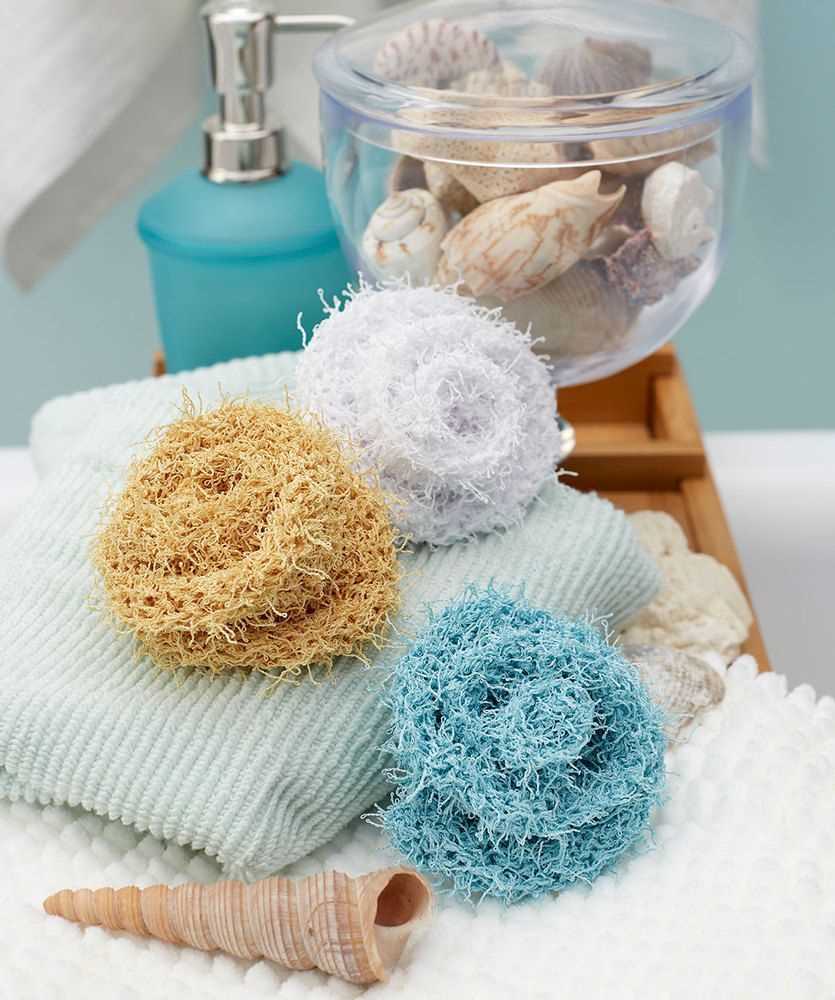
To create a scrubby dishcloth, you will need a special type of yarn called scrubby yarn. This yarn is specifically designed to be rough and textured, making it perfect for scrubbing dirty dishes. Scrubby yarn is available in various colors and textures, allowing you to choose the one that suits your preferences.
2. Knitting Needles
You will also need a pair of knitting needles to work with the scrubby yarn. The size of the needles will depend on the desired tension and thickness of your dishcloth. Choose the appropriate size based on the recommendations provided with your scrubby yarn or the knitting pattern you are following.
3. Scissors
Scissors are essential for cutting the yarn and tidying up any loose ends. Make sure to have a good pair of scissors on hand to easily trim the yarn as needed.
4. Stitch Markers
Stitch markers can be helpful when working on complicated stitch patterns or sections that require careful attention. They can help you keep track of your progress and ensure you don’t lose your place in the pattern.
5. Yarn Needle
A yarn needle, also known as a tapestry needle, is necessary for weaving in the loose ends of the yarn once you have finished knitting. This will give your dishcloth a neat and finished look.
With these materials on hand, you’ll be ready to start knitting your very own scrubby dishcloth. Gather all the necessary items and find a comfortable place to begin your knitting project. Happy knitting!
Yarn
When it comes to knitting and crocheting, choosing the right yarn is essential. Yarn is the basic material used to create fabric and can come in a variety of textures, colors, and weights. Whether you are making a cozy sweater, a baby blanket, or a dishcloth, selecting the right yarn can make all the difference in the final result.
One of the most important factors to consider when choosing yarn is its weight. Yarn weight determines how thick or thin the yarn is, and it can vary from super bulky to lace weight. The weight of the yarn will affect the drape and appearance of the finished item, as well as the amount of yarn needed. It is important to match the recommended yarn weight for your project to ensure the best results.
Texture is another important aspect of yarn. Yarn can be smooth, fluffy, or textured, and different textures can create different effects in your knitting or crochet. For example, a smooth yarn will create a clean, even fabric, while a fluffy yarn will give your project a soft and cozy feel. Textured yarns can add visual interest and dimension to your work.
Color is also an important consideration when choosing yarn. Yarn comes in an endless array of colors, from solid shades to variegated or self-striping options. The color of the yarn can greatly impact the appearance of the finished item. Some knitters and crocheters prefer bold, vibrant colors, while others prefer more subtle, neutral tones. Ultimately, the choice of color is a personal preference and can be used to create a specific mood or style.
In conclusion, when choosing yarn for your knitting or crochet project, consider the weight, texture, and color of the yarn. Experiment with different types of yarn to see how they affect the final result. Whether you are a beginner or an experienced crafter, finding the perfect yarn can bring your project to life.
Knitting Needles
In the world of knitting, the knitting needles are one of the most important tools. These slender and pointed sticks come in a variety of sizes and materials, and their choice can greatly impact the outcome of a knitting project. Steel, aluminum, bamboo, and plastic are the most commonly used materials for knitting needles. Each material has its own advantages and disadvantages, and experienced knitters often have their own preferences.
When choosing knitting needles, one of the key factors to consider is the size. Knitting needles are available in different sizes, ranging from very thin to thick. The size of the needles directly affects the size of the stitches and the overall look of the finished project. Thicker needles create larger stitches, while thinner needles produce smaller, tighter stitches. It’s important to match the size of the needles to the size of the yarn and the desired gauge of the project.
Another important consideration when choosing knitting needles is the material. Steel and aluminum needles are known for their durability and strength, making them suitable for long-lasting projects. Bamboo needles are lightweight and flexible, providing a comfortable knitting experience. Plastic needles are often the most affordable option and are great for beginners. Each material has its own unique feel and characteristics, so it’s worth experimenting with different types to find the one that works best for you.
Knitting needles also come in different lengths. The length you choose depends on personal preference and the type of project you’re working on. Shorter needles are ideal for small projects like socks or hats, while longer needles are better for larger projects like blankets or scarves. It’s also important to consider the type of knitting technique you’ll be using. Some techniques require longer needles to accommodate larger numbers of stitches.
Other Materials
When it comes to knitting a dishcloth, there are a few other materials that you may want to consider besides just yarn and knitting needles. These additional materials can help enhance your knitting experience and make the finished dishcloth even more effective.
Cotton Yarn: One of the most commonly used materials for knitting dishcloths is cotton yarn. Cotton is absorbent and durable, making it perfect for dishcloths that need to withstand frequent use and washing. Look for cotton yarn that is labeled as “dishcloth cotton” or “kitchen cotton” for the best results.
Needle Point Protectors: Needle point protectors are small caps that you can place on the ends of your knitting needles to prevent stitches from slipping off when you’re not knitting. These can be particularly useful when you’re working on a project like a dishcloth that requires a lot of back and forth knitting.
Tapestry Needle: A tapestry needle is a large, blunt needle with a large eye that can be used to sew in loose ends and seams when you’re finished knitting your dishcloth. Having a tapestry needle on hand can make finishing your project much easier and neater.
Stitch Markers: Stitch markers are small plastic or metal rings that can be placed on your knitting needles to mark specific stitches or points in the pattern. This can be helpful when you’re knitting a more complicated dishcloth pattern and need to keep track of where you are.
Blocking Tools: Blocking tools such as blocking mats and blocking pins can be useful when you want to shape and size your dishcloth. Blocking can help your dishcloth look more professional and even out any uneven stitches or edges.
Choosing the Right Yarn for Your Scrubby Dishcloth
When it comes to knitting a scrubby dishcloth, choosing the right yarn is essential. You want a yarn that is durable, absorbent, and easy to clean. Here are a few factors to consider when selecting the perfect yarn for your project.
1. Absorbency
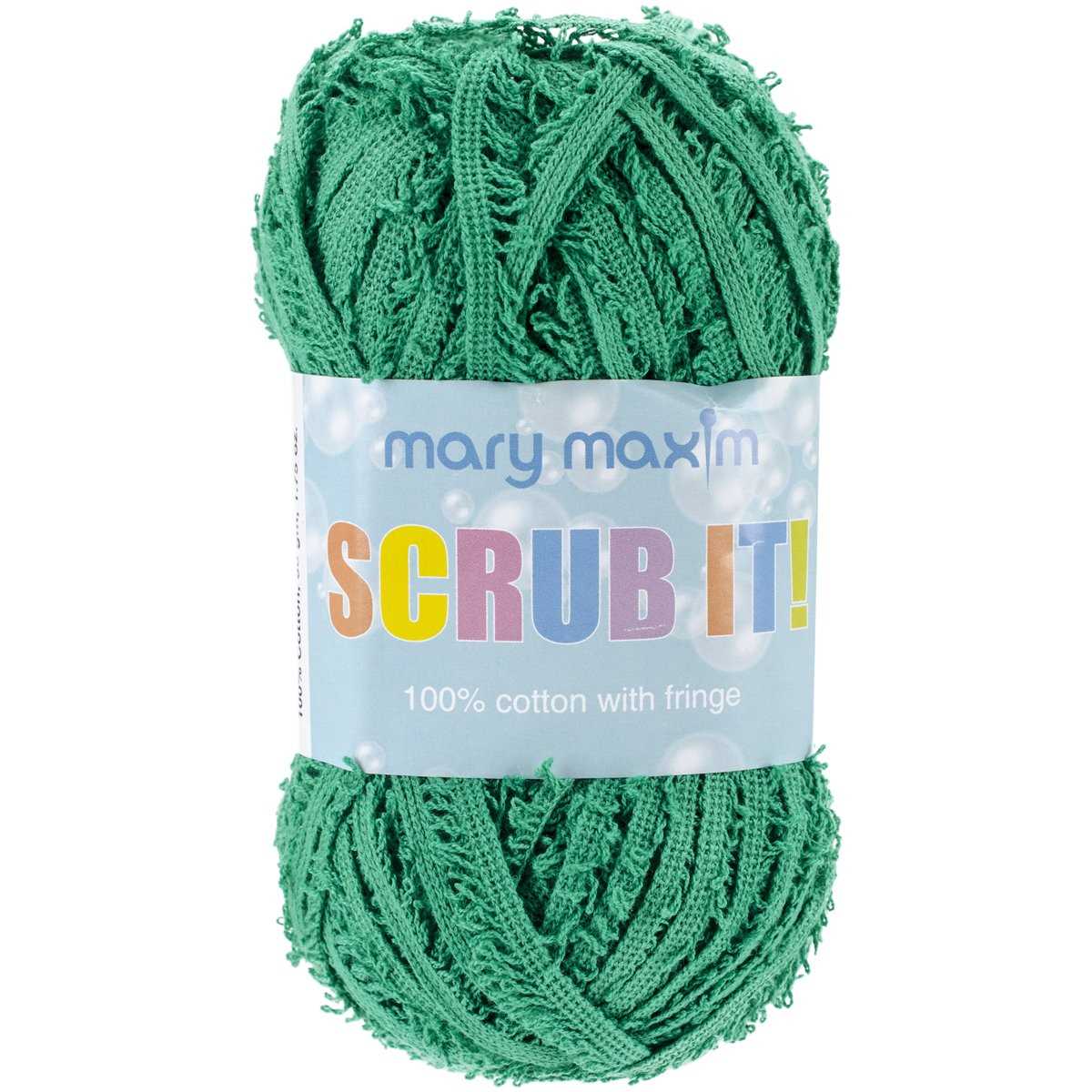
In order for your scrubby dishcloth to effectively clean dishes and surfaces, it needs to be made from an absorbent yarn. Look for yarns that are made from natural fibers, such as cotton or bamboo, as they have excellent absorbency properties. These fibers are also gentle on delicate dishes and won’t scratch or damage them.
2. Durability
Since a scrubby dishcloth will be used for scrubbing and cleaning, it’s important to choose a yarn that is durable and can withstand frequent use. Look for yarns that have a high twist or are specifically labeled as “abrasion-resistant”. These yarns will hold up well to scrubbing and won’t fray or unravel easily.
3. Easy to Clean
Another important factor to consider is how easy the yarn is to clean. Look for yarns that are machine washable and can withstand hot water and detergents. This will ensure that your scrubby dishcloth stays hygienic and germ-free after each use. Avoid yarns that require special care or dry cleaning, as they may be difficult to maintain for everyday use.
By considering factors such as absorbency, durability, and ease of cleaning, you can choose the perfect yarn for your scrubby dishcloth. Remember to check the label for specific care instructions and enjoy the process of knitting a functional and practical dishcloth.
Types of Yarn to Consider
When it comes to knitting a scrubby dishcloth, it’s important to choose the right type of yarn. The right yarn can make a big difference in the texture and durability of the dishcloth. Here are some types of yarn to consider:
1. Cotton Yarn
Cotton yarn is a popular choice for dishcloths because it is absorbent, durable, and machine washable. It can withstand frequent use and is resistant to mold and mildew. Cotton yarn also has a nice scrubbing texture, making it perfect for tackling tough stains and grime.
2. Acrylic Yarn
Acrylic yarn is another option to consider for dishcloths. It is affordable, widely available, and easy to care for. Acrylic yarn is also durable and can withstand frequent use and washing. However, it is not as absorbent as cotton yarn and may not scrub as effectively.
3. Bamboo Yarn
Bamboo yarn is a sustainable and eco-friendly option for dishcloths. It is soft, lightweight, and has natural antibacterial properties. Bamboo yarn also has good moisture-wicking abilities, making it a great choice for dishcloths that need to dry quickly. However, bamboo yarn may not have the same scrubbing power as cotton yarn.
4. Linen Yarn
Linen yarn is another natural fiber option for dishcloths. It is strong, durable, and has excellent moisture-absorbing properties. Linen yarn also has a smooth and soft texture, making it pleasant to use. However, linen yarn can be more expensive and may require special care when washing.
- Conclusion: When choosing yarn for a scrubby dishcloth, consider factors such as absorbency, durability, texture, and eco-friendliness. Cotton yarn is a popular choice for its absorbency and scrubbing power, while acrylic yarn is affordable and easy to care for. Bamboo yarn is eco-friendly and dries quickly, while linen yarn is strong and moisture-absorbing. Choose the yarn that best suits your needs and preferences to create the perfect scrubby dishcloth for your kitchen.
Factors to Consider when Selecting Yarn
When it comes to selecting yarn for your knitting or crochet projects, there are several factors to consider. The type of yarn you choose will greatly impact the final result of your project, so it’s important to choose wisely. Here are some key factors to keep in mind:
1. Fiber Content:
The first thing to consider is the fiber content of the yarn. Different fibers have different properties, such as warmth, softness, and durability. Some common fiber options include wool, cotton, acrylic, and blends. Consider your specific project and how you want the finished item to feel and perform, and choose a fiber that aligns with those goals.
2. Weight:
Yarn comes in different weights, which refers to the thickness or gauge of the yarn. The weight of the yarn will determine the size of the stitches and the overall drape of the finished project. Common weights include lace, fingering, sport, worsted, and bulky. Choose a weight that is suitable for your project and the desired outcome.
3. Color and Dye Lot:
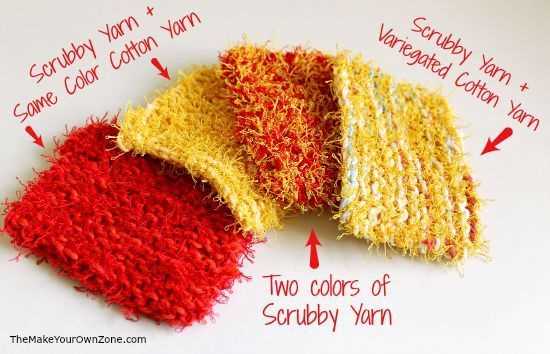
The color of the yarn can greatly influence the aesthetic of your project. Consider the color scheme and design of your project and choose a yarn color that complements it. Additionally, if you are using multiple skeins of the same color, make sure they are from the same dye lot to ensure consistency in color.
4. Care Instructions:
It’s important to consider the care instructions for the yarn you choose. Some yarns may require special washing instructions or have limitations in terms of heat or agitation. Make sure the care requirements align with your lifestyle and preferences to ensure the longevity of your project.
5. Budget:
Lastly, consider your budget when selecting yarn. Yarn can vary greatly in price, so it’s important to have a budget in mind and choose a yarn that fits within that range. Keep in mind that higher-priced yarns often come with better quality and unique features, but there are also affordable options available for budget-conscious crafters.
By considering these factors when selecting yarn, you can ensure that your knitting or crochet projects turn out exactly as you envision. Whether you’re creating a cozy sweater, a lightweight scarf, or a stylish accessory, the right yarn choice can make all the difference.
Getting Started: Casting on Stitches
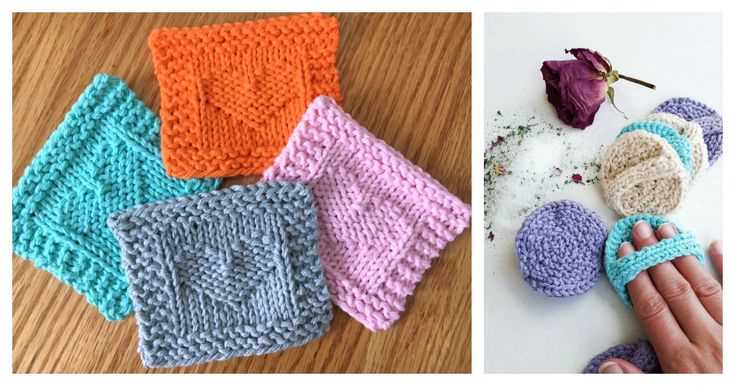
Before you can begin knitting your scrubby dishcloth, you will need to cast on the required number of stitches. Casting on is the process of creating the foundation row of stitches on your knitting needles. It is important to cast on the correct number of stitches to ensure that your dishcloth turns out the right size.
To cast on stitches, you will need a set of knitting needles and your choice of yarn. The size of the needles and the weight of the yarn will depend on the desired texture and thickness of your dishcloth. Once you have your materials ready, you can start casting on.
Here is a simple method to cast on stitches:
- Hold one knitting needle in your right hand (if you’re right-handed) or left hand (if you’re left-handed).
- Using your other hand, hold the end of the yarn and create a slipknot by making a loop and pulling the end of the yarn through it. Place the slipknot on the needle.
- Insert the point of the needle into the slipknot from left to right.
- Hold the needle with the slipknot in your right hand (or left hand) and use your other hand to hold the end of the yarn.
- Wrap the yarn around your thumb and pass the yarn through the loop on your thumb using the needle.
- Slide the loop onto the needle and snug it up.
- Repeat steps 4-6 for the desired number of stitches.
Once you have cast on all the required stitches, you are ready to start knitting your scrubby dishcloth. The cast on stitches will form the foundation row, and you can begin following the pattern instructions to create the dishcloth’s texture.
Step-by-Step Guide to Casting On
When starting a knitting project, the first step is to cast on. Casting on creates the foundation row of stitches and sets the stage for the rest of the project. Here is a step-by-step guide to casting on:
1. Make a slip knot
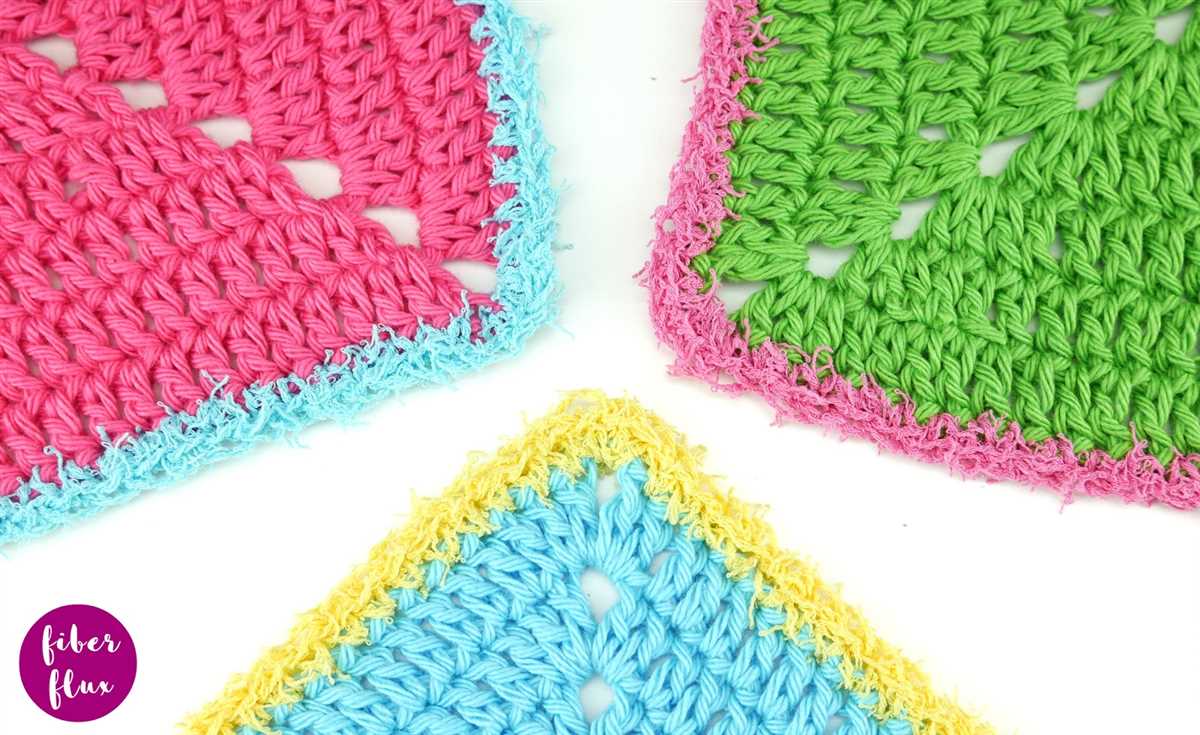
To begin, make a slip knot. Take your knitting yarn and create a loop. Pass the end of the yarn through the loop, creating a knot. Adjust the loop size as needed so that it can easily slide over your knitting needle.
2. Hold the needle
Hold the knitting needle with the slip knot in your dominant hand. The needle should be horizontal, with the slip knot at the end closest to you. Hold the other end of the needle with your non-dominant hand.
3. Insert the needle
Insert the needle into the slip knot from left to right, going through the loop. Make sure the needle goes under the yarn that goes to the ball of yarn.
4. Create the first stitch
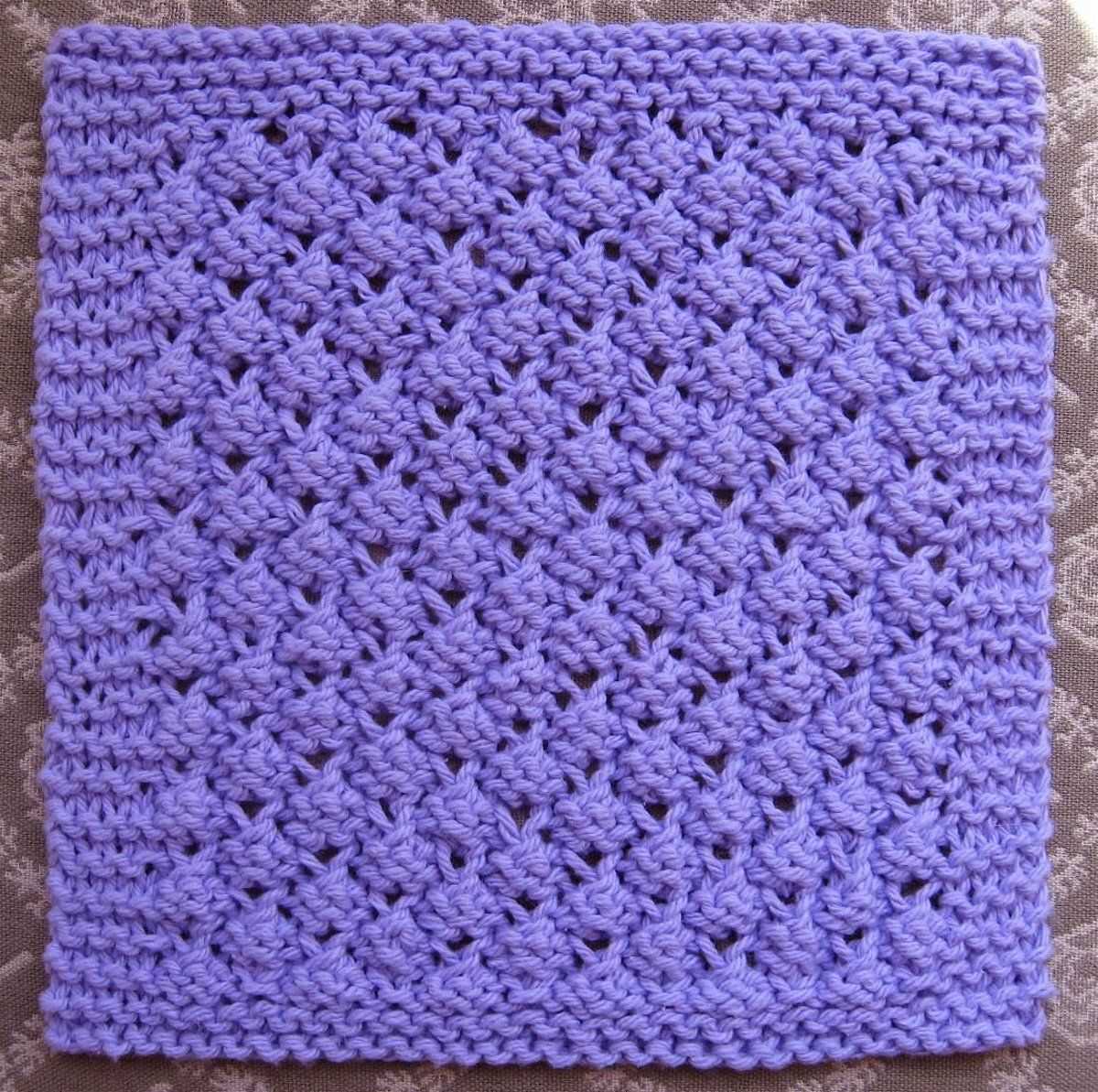
Using your dominant hand, grasp the working yarn (the yarn that goes to the ball of yarn) and pull it through the slip knot. This creates a new loop on the knitting needle. Place this loop onto the needle, making sure it is not too tight or too loose.
5. Repeat the process
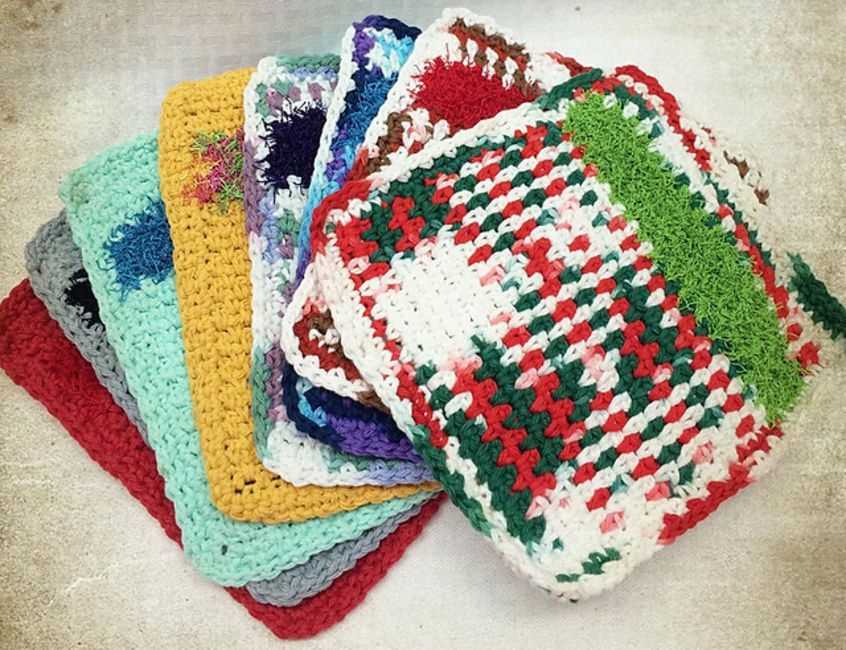
Continue steps 3 and 4, inserting the needle into the loop on the needle and pulling the working yarn through to create new stitches. Repeat until you have cast on the desired number of stitches for your project.
6. Tighten the stitches
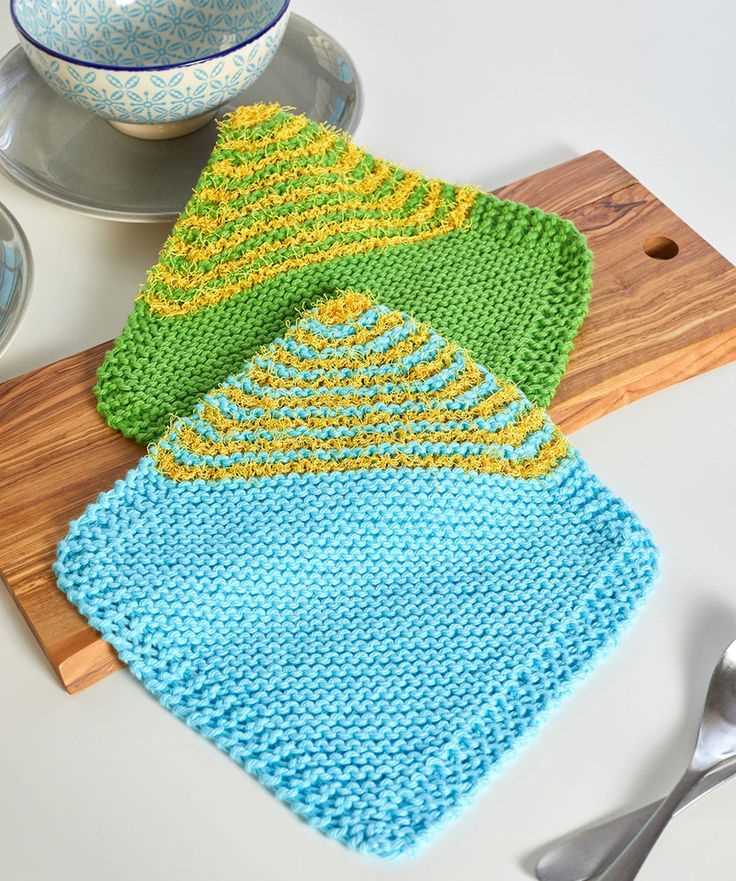
Once you have cast on all your stitches, gently pull on the working yarn to tighten the stitches. Make sure they are evenly spaced and not too tight or too loose. This will ensure a neat and tidy cast on edge.
With this step-by-step guide, you can confidently cast on for your knitting projects and start creating beautiful designs with ease.
Basic Knitting Stitches for the Scrubby Dishcloth
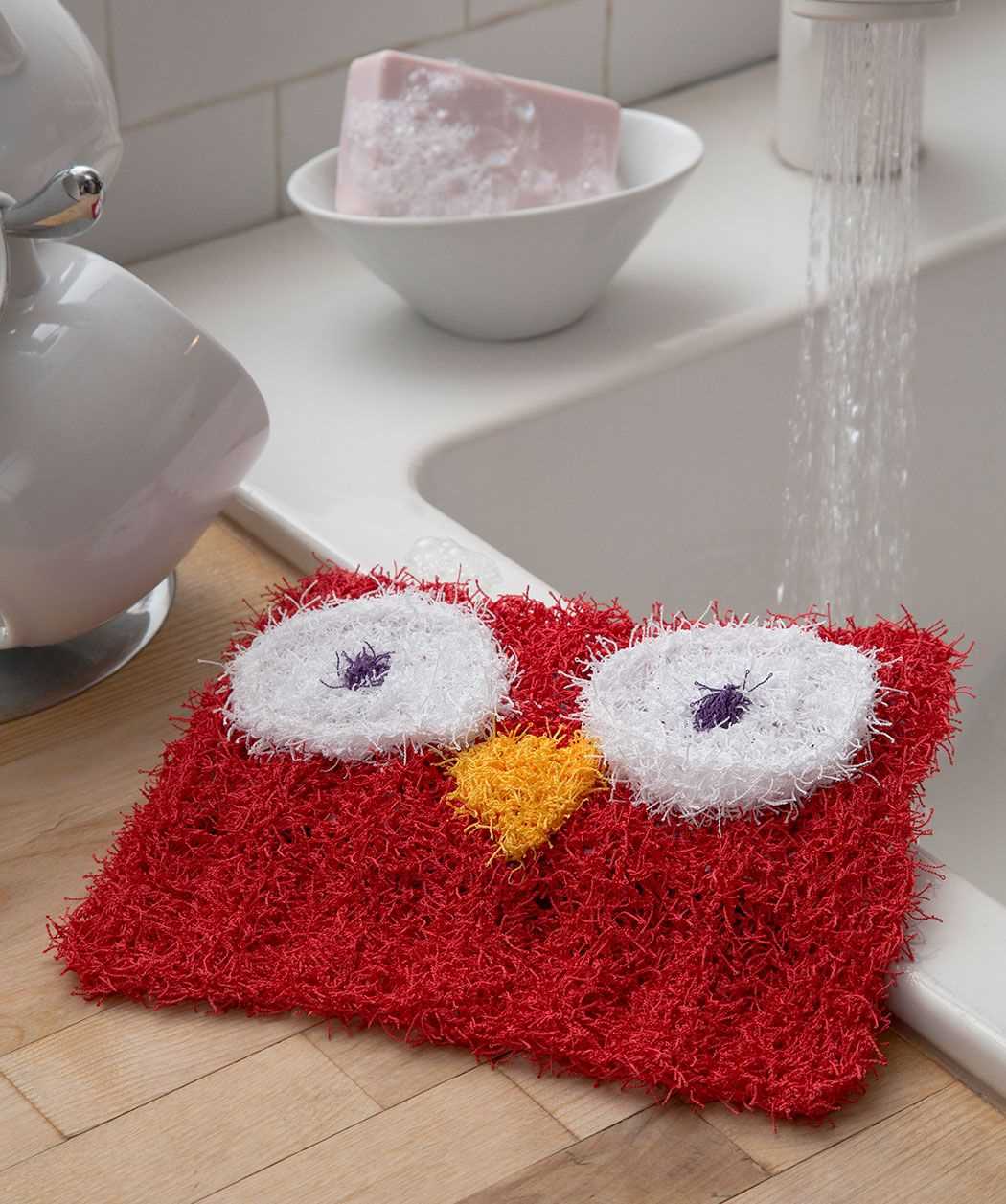
Now that you have learned how to cast on and bind off, as well as how to knit and purl, you are ready to start knitting the scrubby dishcloth. In this pattern, you will mainly be using the knit and purl stitches. These stitches create a bumpy texture that is perfect for scrubbing dishes.
Knit Stitch
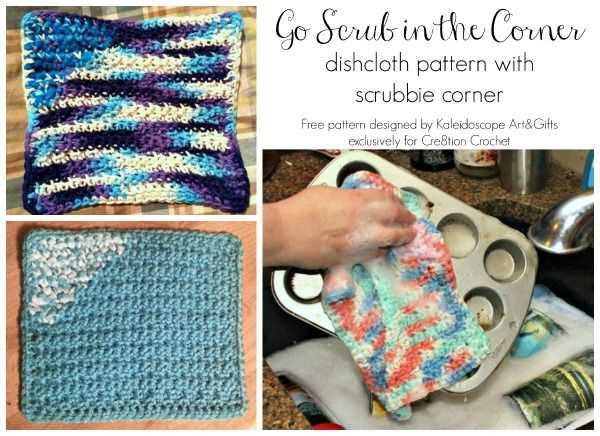
The knit stitch is the most basic stitch in knitting. To knit, insert the right-hand needle into the first stitch on the left-hand needle from left to right, going through the front of the stitch. Wrap the yarn around the right-hand needle from back to front, and then pull the loop through the stitch, slipping the new stitch onto the right-hand needle. Repeat this process for each stitch.
Purl Stitch
The purl stitch is the opposite of the knit stitch and creates a raised bump on the front of the fabric. To purl, insert the right-hand needle into the first stitch on the left-hand needle from right to left, going through the back of the stitch. Wrap the yarn around the right-hand needle from front to back, and then pull the loop through the stitch, slipping the new stitch onto the right-hand needle. Repeat this process for each stitch.
The scrubby dishcloth pattern will instruct you on when to knit and when to purl. By combining these two basic stitches, you can create different patterns and textures in your dishcloth. Don’t be afraid to experiment and try different combinations of knit and purl stitches to create your own unique designs.
Remember, knitting is a skill that takes practice, so don’t get discouraged if your first few dishcloths don’t turn out exactly how you imagined. With time and experience, you will become more comfortable with the stitches and be able to create beautiful and functional dishcloths that will make your kitchen chores a little more enjoyable.